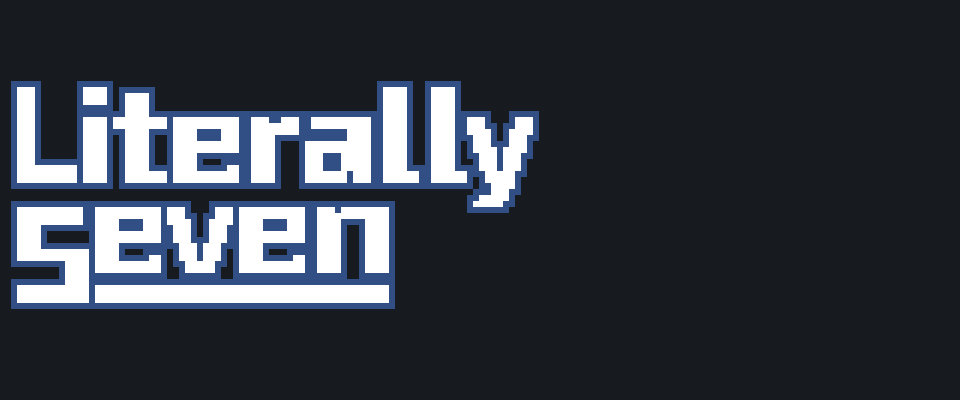My experience on making Literally Seven
Overview
After months without attempting to make an actual game I wanted to join a jam once more, and Godot Wild Jam looked like the best choice for me. I don’t have persistent game devs among my friends and people I trust so I decided to participate alone.
When the theme was revealed as “Seven” I started to think in a way to fit it in a game, and like many people the first thought that came was “Seven is in everything”. Seven lives? Seven levels? What about seven actions? A puzzle platformer with lots of seven involved was formed in my mind in a matter of minutes.
Toggling paths, untoggling paths, the game felt simple to make as it basically involved movement, jumps and attacks. But I wanted to include the wildcards and one of them just wouldn’t fit into it: the RPG one. A message in the splash screen was included (“this just ain’t a RPG”).
The “failure is just another path to victory” one was quite simple: just lose a life in the game and you’ll go back to spawn point with another 7 actions and an unchanged level, and in some levels this would be mandatory.
Finally, standing idle to help progression, I had decided to make some togglable walls that would be toggled by floor buttons. Stepping in would toggle, steeping out would too unless you waited on it for 7 seconds, in which it would be permanently “stepped on”.
What, in my point of view, went wrong
The controls. I confess I did a lazy polishing on the controls. While the idea of a puzzle where you have some free movement was good, the handling of the controls was bad. The character felt too fast, sometimes you couldn’t calculate if your character would stay on floor by moving. The lazyness came mainly because of the jump action. Whenever the move speed was modified, the jump needed to be modified too in order to avoid undesired cheesing like jumping to a far away platform.
While staying idle over a button for 7 seconds (possibly with a chance of getting shot) was a good use of the first wildcard, it felt boring. You’re just not doing anything at all. But what made it even worse was the lack of a graphical representation of the progress, at which the player could just look getting done instead of just an expectation that “this is gonna be green anytime”.
I wanted to work alone in this game, thus I had to work on everything: designing, programming, art and so on. The controllable character was done over the placeholder used in programming (a character that was just head and body, nothing else) by just adding some style to it. Every other art was done this way.
What, in my point of view, went right
It’s hard to think about the good things when the attention goes only to the bad ones so this will be quick.
While the user interface and menus were simple, they were quite organized. The exceptions include the input mapping menu, since this was my first time using input settings. Another exception was the “unclickable” buttons at the main menu, which was a bug. Still, everything went to the point without hundreds of text.
Since the game wasn’t that easy I’ve decided to implement two modes: Easy and Hard. There was only difference between them: Easy would reset your lives once entering a new level, while Hard wouldn’t, meaning you would need a better management of lives.
What would I change?
I would fix everything that went wrong either by eliminating or adapting. Besides that I would change the title. “Literally Seven” was supposed to be a placeholder title until the project was complete. A better name for it would be “Seven Trials”.
Files
Get Literally Seven
Literally Seven
(Almost) everything is seven here.
| Status | Prototype |
| Author | DeeJayLSP |
| Genre | Puzzle, Action, Platformer |
| Tags | 2D, Singleplayer |
| Languages | English |
| Accessibility | Configurable controls |

Leave a comment
Log in with itch.io to leave a comment.